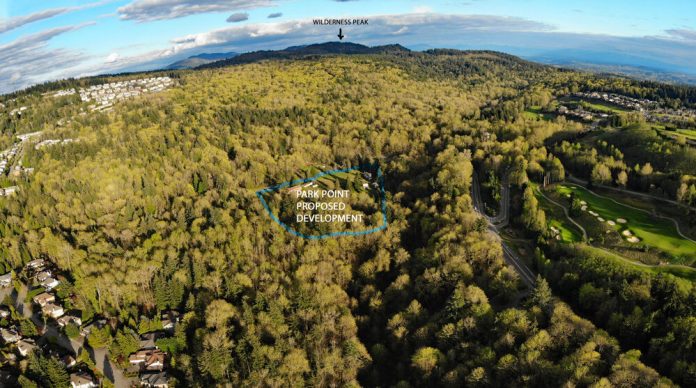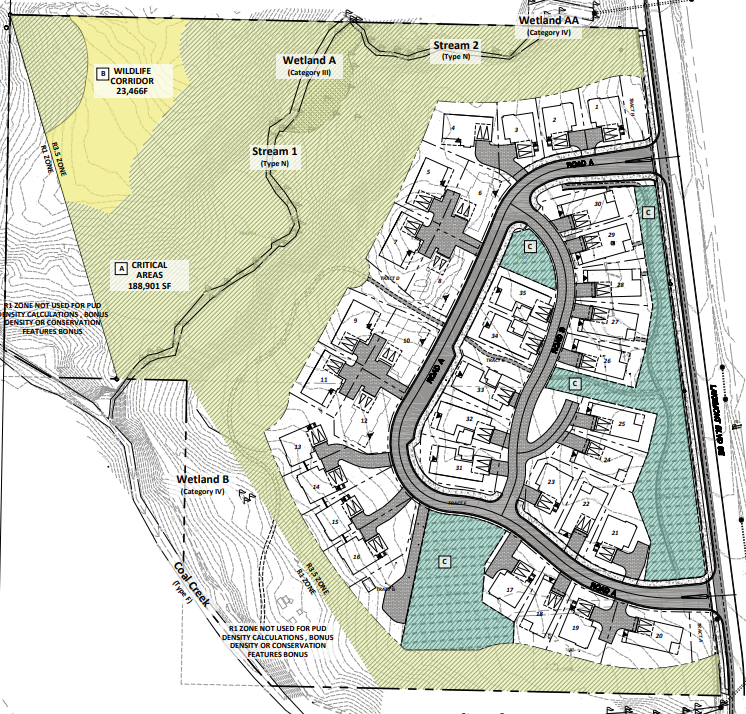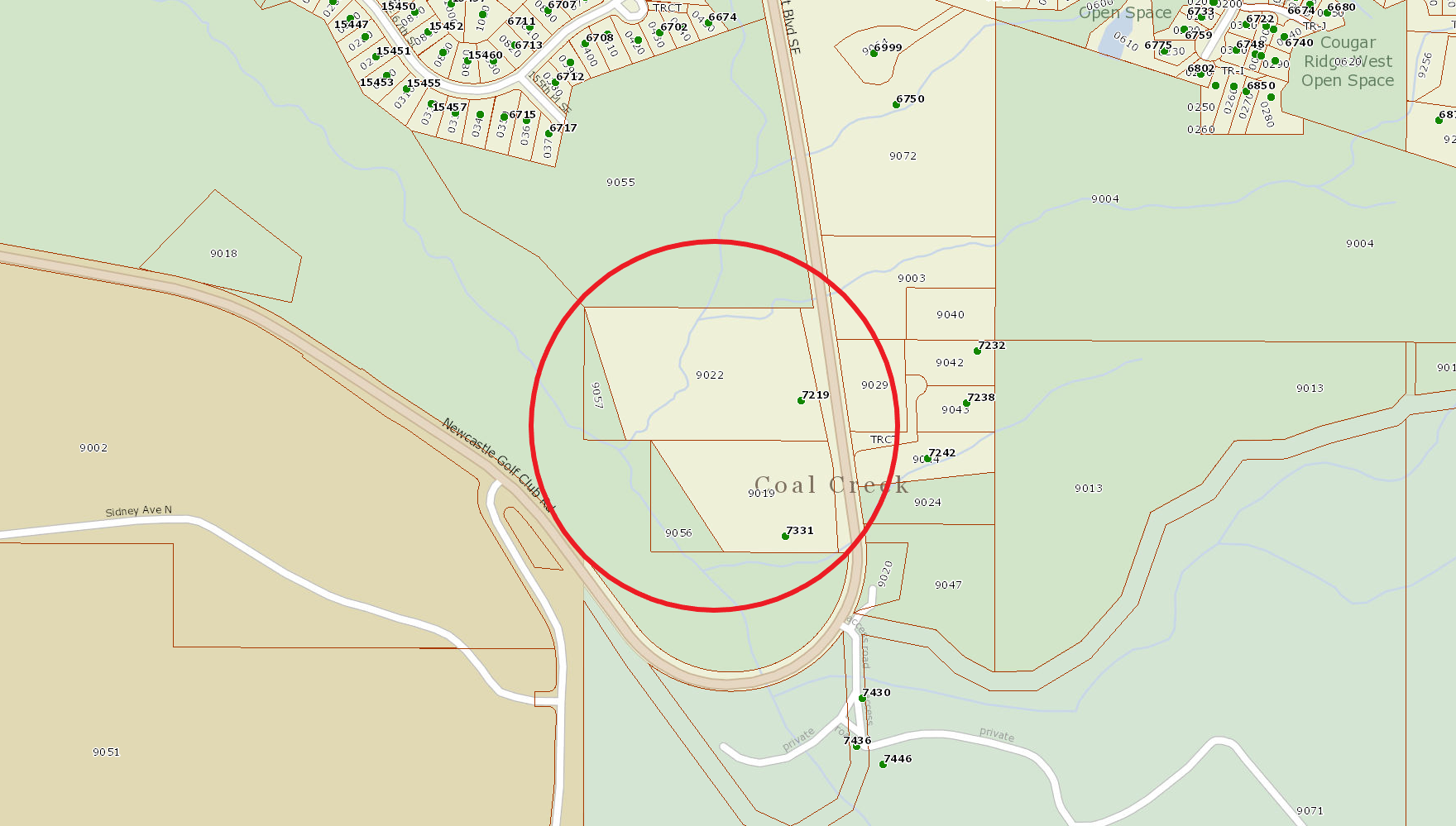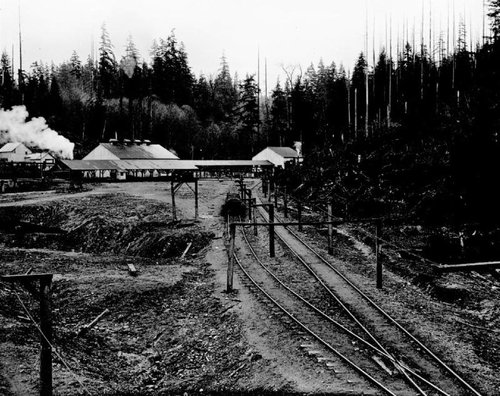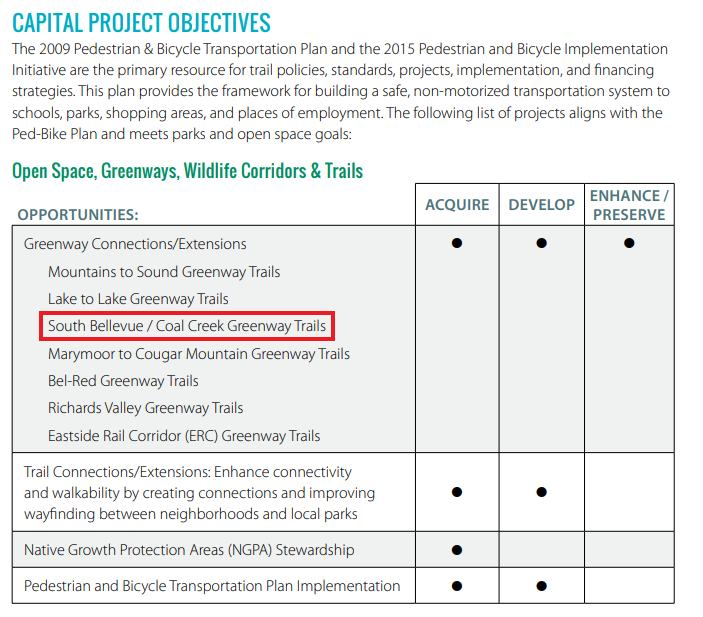Embedded in Bellevue’s Coal Creek wilderness area are a handful of parcels that have been developed or zoned for single-family homes. In 2016 and 2017, the two largest parcels were purchased. Their developer seeks to build 35 new single-family homes on six of the 12.3 acres. After learning about plans to redevelop the two parcels, Save Coal Creek was formed by Issaquah Alps Trails Club in 2016 to convince the City of Bellevue to preserve the parcels as park land.
When I first heard about this initiative, I was reminded of the countless NIMBY (Not In My Backyard) plots to shroud anti-development with plausibly sensible motives. However, my opinion shifted as my research began. Isola Homes, the developer, wants to build 35 single-family homes in the middle of Coal Creek. While it does increase housing stock, these homes would be at the southern border of Bellevue, far from the City’s services and employment core. The developer would basically create 35 new car-dependent households. Unique and valuable animal habitat would be sacrificed and Coal Creek and Cougar Mountain would see more impact at their meeting. This movement isn’t opposition to urban vibrancy, but instead a containment of and rare opportunity to shrink damaging suburban sprawl.
Accusations of NIMBYism fall flat in light of the site’s context. Notice how close the parcels are to Coal Creek, the near enclosure of the parcels by green space, and the wetlands and streams running through the parcels. The city doesn’t need more single-family homes in transit deserts and irreplaceable green space, housing supply should be added with multifamily development closer to the city’s economic and transportation amenities. The site is further complicated by its history and critical nature, which make the dramatic development of the site potentially unsafe and damaging.
Preserving Coal Creek
The coal under Newcastle and what’s now Bellevue formed 35 million to 40 million years ago after a changing climate covered swamp with layers of mud and sand. Compressed plant matter (coal) would eventually be pushed to the surface with the uplift of Cougar Mountain that began 30 million years ago. Later, glacier retreat from the last ice age 16,000 to 16,900 years ago would reveal the steep hills of now Newcastle. This topography would allow coal deposits to emerge with local creeks cutting through the thin layer of soil hiding the resource.
On January 9, 1864, Philip Lewis and Josiah Settle found coal along the banks of a creek by what is now Red Town Trailhead on Cougar Mountain. Over a century of mining, many mining companies and modes of transportation would carve their way through and to the mines under present day Cougar Mountain, Coal Creek Natural Area, and The Golf Club at Newcastle. From 1864 to 1963, nearly 11 million tons of coal would be produced and fuel the growth of Seattle, its port, the wider region, and where else the fossil was destined.
The last major mining company would cease operation in Coal Creek in 1929, taking much of the company town that had formed around the mining with it. Many of the miners would take work in other mines, but those that decided to stay would start their own independent mining companies and operations in the mines. These workers colloquially referred to as “gyppo miners” did small-scale mining on contract leases, engaging in a lot of undocumented and unsafe mining practices to get as much of the worthwhile coal out of the mines. They would mine out safety margins in coal seams and mine up to tree roots, causing cave-ins and other settling that continue to impact the surface.
Now, nearly 60 years after mining ended, most of the area has been formalized as public green space with King County’s Cougar Mountain Regional Wildland Park and Bellevue’s Coal Creek Natural Area. The scars of a century of mining are well into the process of recapture and healing by nature. Concerning the fate of other parts of the mined region, Palmer Coking Coal Co. requested a permit from King County in the 1960s for housing on what is now The Golf Club at Newcastle. That permit was rejected because of concerns over safety and mine shaft collapse. The two Coal Creek parcels in question should also be spared, but become a public rather than private green space.
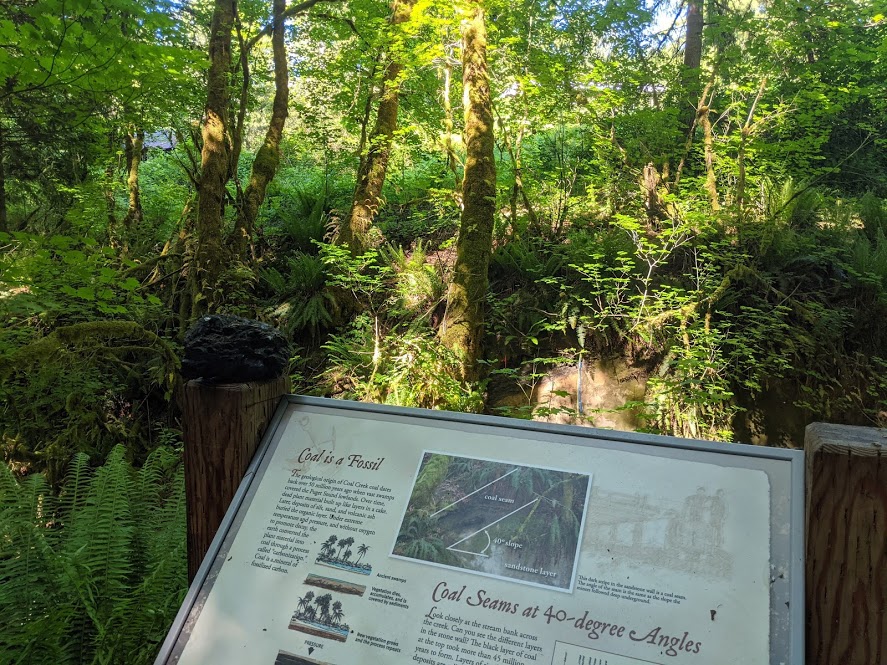
Preserving the parcels is a way to preserve history in line with Bellevue’s, the region’s, and the state’s goals for the future. The City of Bellevue has commitments through the 2021-2025 environmental stewardship plan, their parks planning, the pedestrian and bicycle plan, and Vision Zero. Acquiring the two parcels gives the city an opportunity to hit on many of the commitments in the environmental stewardship plan. Saving Coal Creek could preserve and increase the tree canopy contributions that the parcels currently provide. Preventing 35 new single-family homes and their likely personal vehicle dependent residents helps the City rein in the number of miles driven. Taking action to control suburban sprawl would also show Bellevue leading by example, another one of the City’s many commitments.
In the 2016 Parks Open Space Plan, it’s clearly noted that South Bellevue/Coal Creek Greenway Trails are up for consideration for acquisitions. The trail system has seen development and enhancement, but the eastern terminus of the greenway has clear opportunities for pedestrian and bike access. This also well aligns improvements to Coal Creek with the pedestrian and bike plan. Potential Coal Creek improvements are also related to safety, bringing in Vision Zero targets. There’s no crossing, no sidewalks, and no bike lanes where Coal Creek and Cougar Mountain meet. Lakemont Blvd SE isn’t even particularly safe for cars, two automobile crashes have happened in the past decade. One of those crashes resulted in a fatality.
One path to acquiring the parcels would be Bellevue purchasing them with revenues from the current or next parks levy, Capital Improvement Program Plan, and real estate excise tax — all mechanisms that Bellevue currently uses to acquire parkland. Another option is King County’s Conservation Futures Levy that, as of 2016, over $15 million has already been used for Bellevue’s parkland acquisitions. Other programs with King County are also available, Bellevue would just have to apply for funding. This all said, it’s important to caveat that it might be difficult to get funding for Coal Creek because of how well served Cougar Mountain and Lakemont are by parks. The two subareas are among the best served in Bellevue.
The area is also a regional resource, folks from all over the county and even tourists visit the area. King County and the state share much of the same environmental and safety commitments with Bellevue. They could also get involved. Possible funding sources along this regional thinking include leveraged funds, private donations, Washington State Recreation and Conservation Office grants, other state grants or appropriations, and the Federal Land and Water Conservation Fund.
What to do with the parcels
Let’s say that Bellevue does acquire the parcels for park land, the City has a fair number of options to improve Coal Creek. Today, Coal Creek’s eastern terminus narrows to an unmarked unsafe crossing to Cougar Mountain Regional Wildland Park. Save Coal Creek advocates have noted the increasing traffic to Coal Creek and Cougar Mountain and the lacking capacity to accommodate visitors. Historical sites are also more of a footnote rather than a highlight of the area. The Coal Creek Greenway/Trail itself is in great shape, but access and programming could be improved. Acquiring the two parcels would provide the space for the City to make the trail safer, more accessible, and more educational.
The first major improvement the City could make is improving pedestrian and bike safety. Continuing unprotected bike lanes, which abruptly end at the intersection of Lakemont Blvd SE and Forest Drive SE, all the way down Lakemont Blvd SE to the parcels would both increase pedestrian and bike safety and access. Safety could also be enhanced with a formal pedestrian crossing north of the current informal crossing point to grant incoming traffic and users of the crossing better sightlines and more time to react. Pairing this with a potential King County Metro Trailhead Direct route to Cougar Mountain’s Red Town Trailhead could also relieve the parking lot at Cougar Mountain. Traffic calming like lower speed limits would also be welcome.
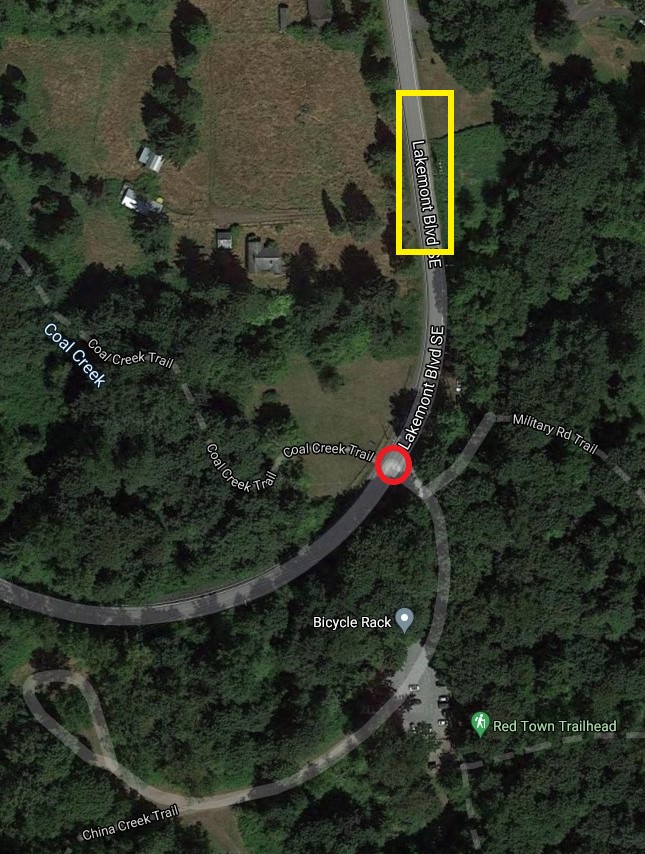
On the parcels, there are over 12 acres of space available for use. Preservation of historical buildings and artifacts, programming for history tours, and other amenities could highlight Coal Creek’s history. Like the surrounding trail system, a lot of the acreage could and should be preserved as space for the wildlife in the area. Amenities could also be provided for people to rest on or prepare to go hiking from. Perhaps a parking lot for drop-off and ADA parking might be appropriate, but offsetting capacity pressure with pedestrian, bike, and/or transit infrastructure might be more worthwhile.
If money were no object a wildlife crossing across Lakemont Blvd SE could be entertained as there’s often a migration of animals across Lakemont Blvd NE, especially when water sources in Cougar Mountain start to dry up in the summer, to access creek water. Though this crossing, as well as possible crosswalk and sidewalk improvements, would likely have to involve the County because of interaction with their jurisdiction.
Bellevue should wholly embrace their moniker of ‘city in a park’. Coal Creek is a jewel in the city’s park collection; polishing it further would be in line with city goals.
If you want to help advocate to keep these parcels the green space they’ve been since their recent sale, visit Save Coal Creek and sign their petition. If you live in Bellevue and support preserving more of Coal Creek, let your councilmembers know.
Many thanks to Sally Lawrence and Steven Williams with Save Coal Creek for their tour of the trail system and the accompanying history lesson.
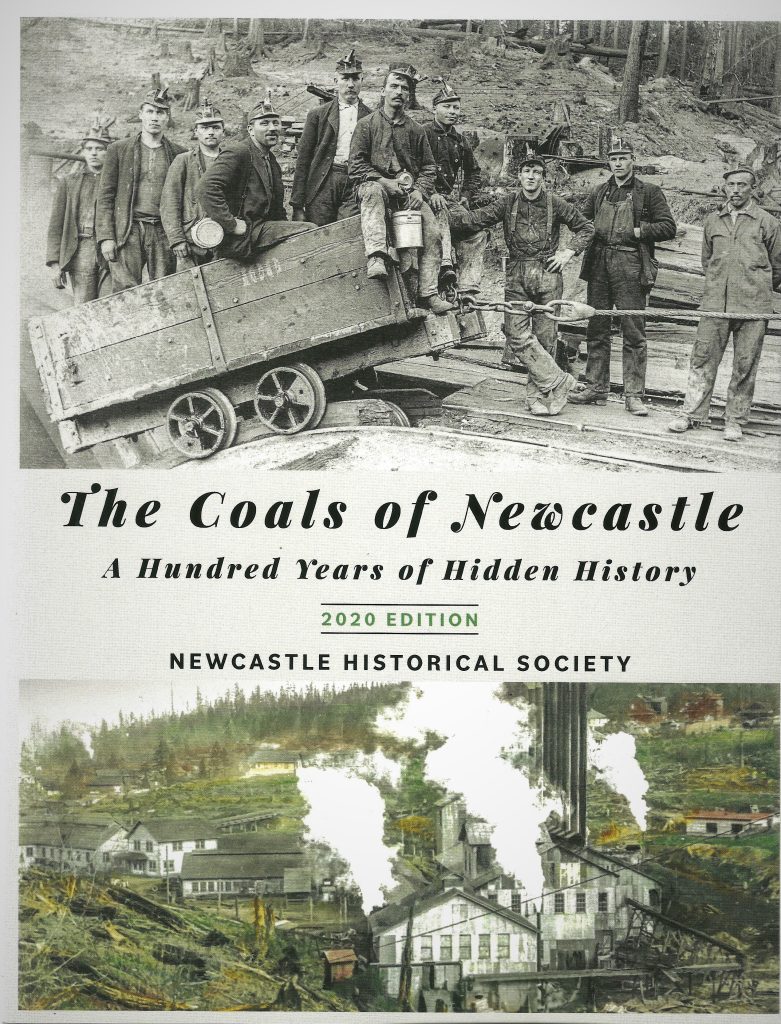
The vast majority of history cited in the article comes from the research done by the Newcastle Historical Society. If you would like to learn more about the history, the Newcastle Historical Society produced a book capturing a comprehensive history of Coal mining in the Newcastle area.

